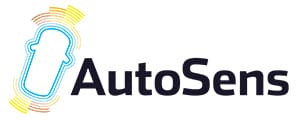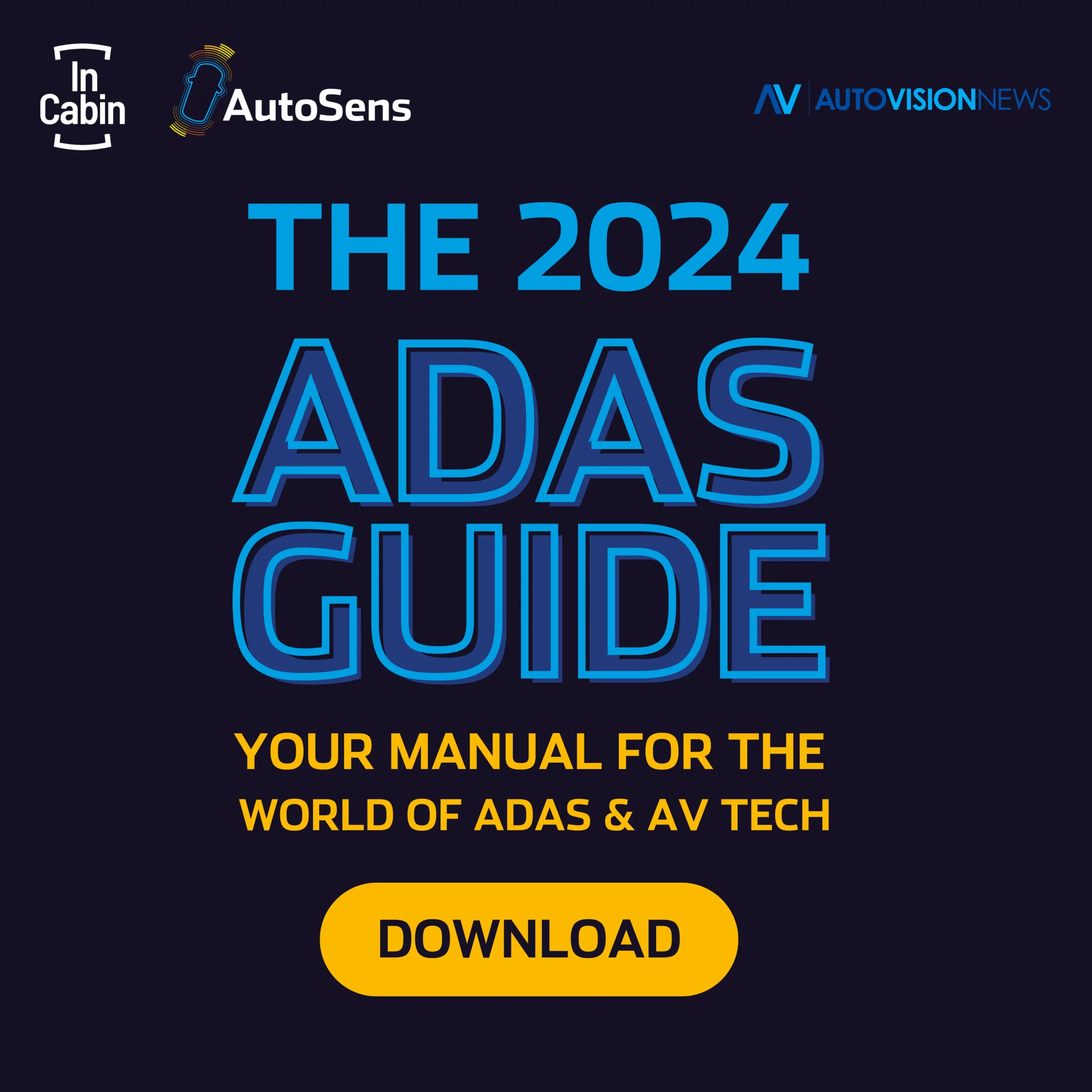AutoSens Europe, held in parallel with InCabin Europe, took place in Barcelona, Spain, during the week of October 8, 2024. This top-tier automotive convention focused on enhancing vehicle safety and exploring the technical aspects of engineering safer cars for future generations.
The event featured a comprehensive two-track agenda, expert-led roundtables, in-depth tutorials, and a full exhibition floor. On Wednesday, October 9, a press briefing was held, during which seven companies made announcements at the InCabin press briefing, while nine companies introduced their latest technologies at the AutoSens press briefing. Here is an overview of what each company presented during InCabin Europe 2024.
1. Claytex
At the previous “AutoSens Press Conference USA 2024,” Claytex launched its Sim4CAMSens Innovate UK simulation tool project, funded by the Centre for Connected and Autonomous Vehicles (CCAV). In collaboration with the National Physical Laboratory (NPL), AESIN, Compound Semiconductor Applications (CSA) Catapult, WMG, Oxford RF, rFpro, Syselek, and Claytex, this project aimed to develop methods for quantifying and simulating camera, radar, and lidar sensor performance under variable conditions.
“The objective is to close the reality gap between simulation and real-world testing,” said Mike Dempsey, Managing Director at Claytex.
Earlier this year, the reputable automotive magazine Future Vehicle featured Claytex’s in-house product Censeo—a ‘front-end graphic user simulation interface’—and discussed its key challenges and working guidelines for this simulation tool:
- The two major challenges faced during the development process were analyzing the requirements of a sensor model for the safety assurance of automated vehicles, and validating a sensor model.
- To address these challenges, four work packages were curated: perception sensor requirements, test data collection and analysis, modeling and simulation, and accelerating sensor development.
- During the requirement phase, the survey team determined the type, effects, and functionality of the sensor suite for an automated vehicle.
- Work Package 2 involved the testing and analysis of data to quantify the performance of perception sensors, ultimately leading to findings regarding their response to radars and lidars of different wavelengths.
- Work Package 3 focused on fine-tuning the sensor models to fit the simulation environment.
- In the final work package, the collaborating partners aimed to test these sensor models.
“By the end of the project, we hope to have better sensor models that will have gone through this full validation process. We will be confident that they meet the requirements for safety assurance,” Dempsey said.
2. Sheba Microsystems Inc.
As the automotive market advances towards enhanced driver assistance solutions, the need for high-resolution sensors with consistent performance across varying environmental conditions becomes increasingly apparent. To address this need, Sheba Microsystems launched the world’s first autofocus automotive-grade camera, Sharp-7, incorporating an 8-megapixel sensor and a MEMS driver.
“Currently, fixed-focus cameras are the standard in automotive, but autofocus cameras can offer extraordinary advantages, especially in terms of vehicle safety,” said Dr. Faez Ba-Tis, CEO and Co-founder of Sheba Microsystems. “To pave the way for new innovations in ADAS, object detection, and digital zooming, autofocus cameras can make this possible—but to date, solving the challenge of lens thermal expansion has been a blocker. Sheba’s Sharp-7 solves these long-standing challenges to ultimately make everyone on the road safer.”
For the quality assessment of Sheba’s Sharp-7 autofocus camera, DXOMARK, a pioneer in testing consumer electronic devices, conducted a comprehensive evaluation through thermal chamber testing and reported the following findings:
- When tested against a top-in-class fixed-focus camera at temperatures over 60 degrees Celsius, Sharp-7 maintained precise imaging up to 120 degrees Celsius, while the fixed-focus camera experienced quality degradation beyond 60 degrees Celsius.
- Sharp-7’s sensor can generate heat to keep itself above 50 degrees Celsius, and when combined with an ADAS camera under direct sunlight, it can reach up to 100 degrees Celsius.
- Additionally, Sharp-7 demonstrated its reliability against drop, thermal shock, thermal cycling, vibration, mechanical shock, tumble, and micro-drop tests.
“Autonomous driving requires cameras that perform reliably in all conditions, including extreme temperatures ranging from -40 to over 100 degrees Celsius. In our tests, we benchmarked the Sharp-7 against a high-end fixed-focus camera and saw sharpness degrade rapidly above 60 degrees Celsius, which could compromise autonomous driving systems. This is where the Sheba Sharp-7 stands out. As our tests show, the Sharp-7 delivers consistent image quality and sharpness even at temperatures exceeding 125 degrees Celsius. With Sheba’s technology, not only can we guarantee precision for vehicle safety today, but we are paving the way for fully autonomous driving in any environment tomorrow.”
3. Lynred
At AutoSens Barcelona 2024, Lynred unveiled the world’s smallest infrared sensor designed for future Automatic Emergency Braking Systems (AEB) and Advanced Driver Assistance Systems (ADAS), featuring 8.5 µm pixel pitch technology that reduces the volume size by 50%.
The development of this thermal imaging sensor was driven by the following key needs:
- The National Highway Traffic Safety Administration (NHTSA) has mandated that AEB systems be included in all light vehicles by 2029.
- The European Traffic Safety Council (ETSC) recognizes that AEB systems must perform effectively in wet, foggy, and low-light conditions.
- More efficient Pedestrian Automatic Emergency Braking (PAEB) systems are required to operate in adverse conditions.
Lynred’s longwave infrared pixel pitch technology presents a promising solution for reducing traffic accidents at night, when the fatality rate is over 75%. This innovation aims to optimize the size-to-performance ratio of next-generation cameras, enabling easier integration within light vehicles. Currently, Lynred is prepared for high-volume production of its 12 µm thermal imaging sensor, which can be further minimized for future safety solutions.
“Lynred is excited to show the automotive community at AutoSens Europe its prototype 8.5 µm pixel pitch thermal imaging sensor. It cuts the volume of a thermal camera in half, allowing for smaller lenses and other components. With no trade-offs in performance, we believe that this 8.5 µm pixel pitch technology will represent an attractive option for future AEB systems,” said Quentin Noir, Product Manager at Lynred.
4. Novelic
At the AutoSens Europe 2024 press briefing, Novelic introduced its mmWave radar parking sensor, ASPER, designed to surpass ultrasonic sensors by offering a multi-functional radar solution integrated into the same hardware at an affordable cost.
As the automotive sector advances towards smart driving solutions, low-quality parking cameras pose a significant risk in detecting low-height objects, curbs, and child pedestrians. ASPER addresses these challenges as an innovative solution.
Key features of Novelic’s ASPER radar parking sensor include:
- Long-range detection: Capable of detecting vehicles within a 100-meter range using a 180-degree field of view.
- 360-degree surround sensing: Provides comprehensive coverage with the ability to detect objects as close as 5 cm.
- Lateral collision warnings: Delivers alerts for passenger and commercial vehicles in all weather conditions, including day, night, dust, and rain.
Enhanced accuracy: Outperforms capacity sensors in applications such as kick sensing, power door activation, and tailgate protection.
5. rFpro
One of the biggest barriers to the development of Autonomous Vehicles (AVs) and Advanced Driver Assistance Systems (ADAS) is the limited availability of real-world testing data. At the last “AutoSens 2024 Congregation USA,” rFpro launched its largest digital library, featuring a physically modeled road network with locations and street furniture accurate up to 1 millimeter. Building on this initiative, rFpro introduced its fully integrated simulation solution, AV Elevate, at the AutoSens press briefing in Barcelona.
“AV Elevate is a game-changing simulation platform; it is the most advanced solution to enable the complete AV technology stack to be tuned, trained, and tested,” said Matt Daley, Technical Director at rFpro. “For the first time, AV developers can confidently reduce their reliance on real-world testing and instead subject systems to AV Elevate’s highly accurate synthetic data. Now, testing and development can be massively and cost-effectively scaled like never before, removing the biggest barrier to the advancement of AVs.”
Leveraging rFpro’s advanced rendering engine technology, high-fidelity data, and real-time simulation, AV Elevate enables the testing of smart vehicles from the comfort of an office by:
- Tuning and optimizing the sensor suite against commercially available technologies.
- Training perception and control systems with 100% accurate synthetic training data.
- Testing Autonomous Vehicles through the generation of challenging cases, followed by fine-tuning the system.
Following this framework, AV Elevate significantly improves the productivity, cost-efficiency, safety, and development speed of Autonomous Vehicles.
“The purpose of AV Elevate is to help OEMs reduce their reliance on public road testing and data collection to significantly cut costs and accelerate development,” Daley concluded. “We believe our fully integrated simulation solution is the most accurate available, giving manufacturers the confidence needed to make that move.”
6. Valens Semiconductor
Daniel Shwartzberg announced three major design wins for the Valens’ VA7000 MIPI A-PHY deserialized chipsets at the AutoSens Barcelona, 2024. Being the first company to bring A-PHY connectivity solution to the market, its major achievements are:
- Validation of Valens as a key supplier of ADAS connectivity solutions and identification of MIPI A-PHY as a standard for next-generation of automotive connectivity sensors.
- MIPI A-PHY sets to be embedded in a vehicle model with production figures of up to 500,000 units per year ultimately generating over 10 million dollars for the next 5-7 years.
- When tested against market competitors, Valens chipsets are accredited as a superior sensor connectivity solution delivering best-in-class EMC performance, a clear roadmap to ultra-high bandwidth, simple architecture, end-to-end safety, and lowest error rates.
“As a former CTO and executive for major automotive OEMs, I can attest to how the industry has been waiting for a safe and resilient high-performance connectivity standard,” said Dr. Peter Mertens, Chairman of the Board of Directors at Valens Semiconductor. “This is exactly what Valens has brought to the industry. I anticipate that this OEM validation will open the floodgates for further adoption of this important connectivity technology.
At the press conference, Valens proudly embraced the backing of their chipsets by IEEE and their utilization in the Mercedes-Benz MBUX infotainment system.
“We’re proud to have been selected by such leading OEMs, and to receive this resounding confirmation of the superiority of Valens technology,” said Gideon Ben-Zvi, Chief Executive Officer of Valens Semiconductor. “We knew that our investment into the automotive industry would take time, but we’re thrilled to see our long-term strategy yielding results. I feel proud of the Valens team, which worked tirelessly over many long years to turn our vision for an automotive connectivity standard into a reality.”
7. KD
KD introduces the KD7251, the first optical multi-giga bit transceiver designed for automotive applications that aim to support PHYs for 2.5, 5, and 10 Gb/s operations in accordance with IEEE Std 802.3cz, utilizing bend-insensitive multi-mode glass optical fiber (OM3).
Notable features of the KD7251 include:
- Single-chip solution integrates an optical fiber interface, optical engine, photonics, and electronics within a hybrid package, enabling compatibility with standard reflow assembly processes.
- Offers Ethernet PHY functionality for symmetric-traffic backbone networks for cameras, radar, lidar, and DSI-2SM for displays.
- Additionally, it integrates a Gen 3 interface for low-latency interconnections with AI units.
- The KD7251 supports IEEE Std 1722b encapsulation for MIPI and remote control (GPIO, SPI, I2C) over Ethernet, facilitating traffic disaggregation, multi-drop functionality, and various connectivity combinations between Ethernet and MIPI interfaces.
- It includes support for MACsec, PTP, wake-up & sleep, and advanced reliability features.
Ultimately, this multi-gigabit transceiver ensures comprehensive performance and dependability in automotive applications.
Conclusion
AutoSens Europe 2024 marked as the best-in-class automotive event bringing breakthrough technologies while progressing towards Level 3 autonomy of vehicles. It prioritized minimizing vehicle crashes by utilizing precise driver assistance solutions. Ranging from rFpro’s AV Elevate high-fidelity sensor solution to Sheba Microsystem’s Sharp 7, autofocus camera, these innovations emphasize cost reduction and swift validation of autonomous vehicles through frameworks, simulators, and precise sensors.








